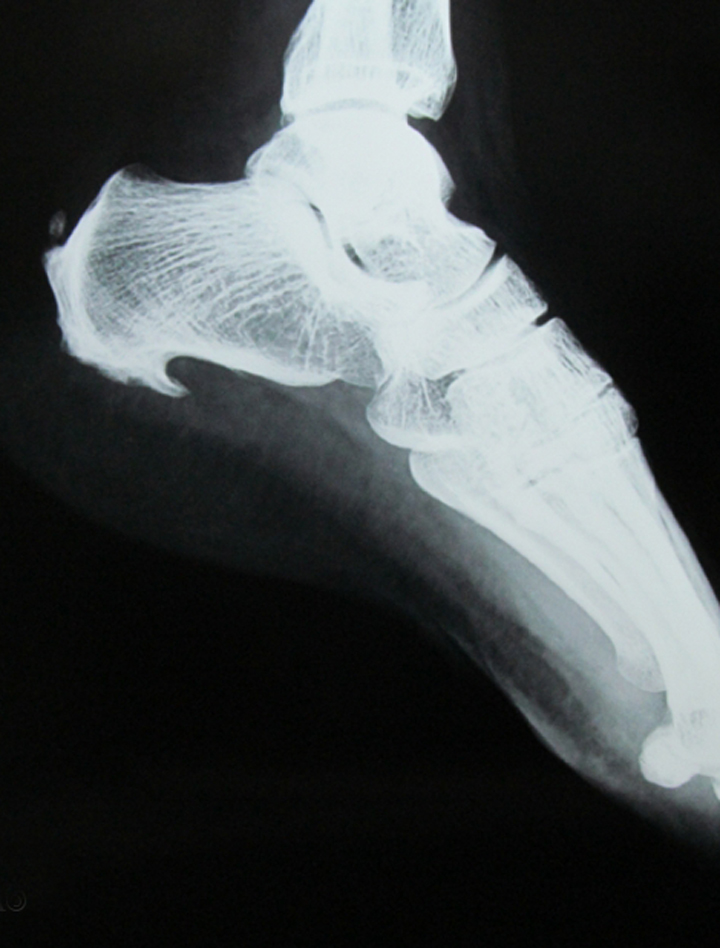
Affiliated Foot Care Center
Call 860•349•8500 or 203•294•4977

Heel spurs may be detected by using an X-Ray. It is a small osteophyte (or bone spur) located on your heel.
When a foot bone is exposed to constant stress, calcium deposits build up on the bottom of the heel bone. Generally, this has no effect on daily life. However, repeated damage can cause these deposits to pile up on each other,causing a spur-shaped deformity, called a calcaneal (or heel) spur. These tend to develop most in obese people, flatfooted people, and women who constantly wear high-heeled shoes.
Heel spurs are soft, bendable deposits of calcium that are the result of tension and inflammation in the plantar fascia attachment to the heel. Heel spurs do not cause pain. They are only evidence (not proof) that a patient may have plantar fasciitis.
Some people suffering from heel spurs begin walking on the front of their foot because of the pain. This may help if they have something other than plantar fasciitis, but if they have plantar fasciitis, walking on the forefoot causes more tension in the plantar fascia (which pulls more on the heel) and it can actually make their condition worse. Unfortunately, it can take 12 to 36 hours after harmful activity before the pain increases, so it is not usually obvious what activity is causing an increase in pain. For example, you may not know if it was a recent change in shoes or changing your jogging route to a terrain with hills that is causing an increase pain. But since a lack of flexibility in the calf muscles and/or excess weight are the causes of most cases, it is not usually a particular activity that can be blamed.
To properly treat heel spurs, you must absorb shock, provide cushioning and elevate your heel to transfer the pressure that causes the pain. Dr. Fostick can prescrie orthotics, heel cups and heel cradles that will absorb the pressure.
If the issue is related to plantar fasciitis, Dr. Fosdick can prescribe an orthotic with a medial posting and good arch support that will control the pronation and prevent the inflammation of the plantar fascia.